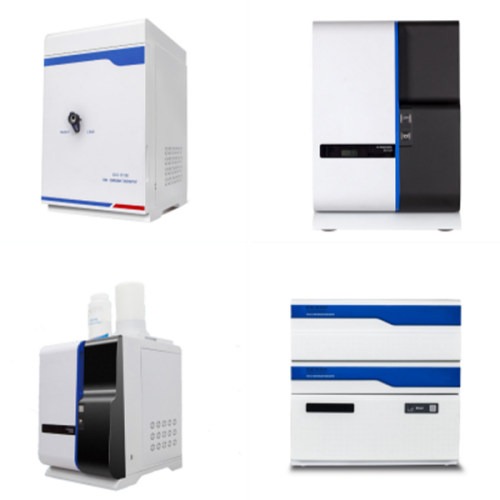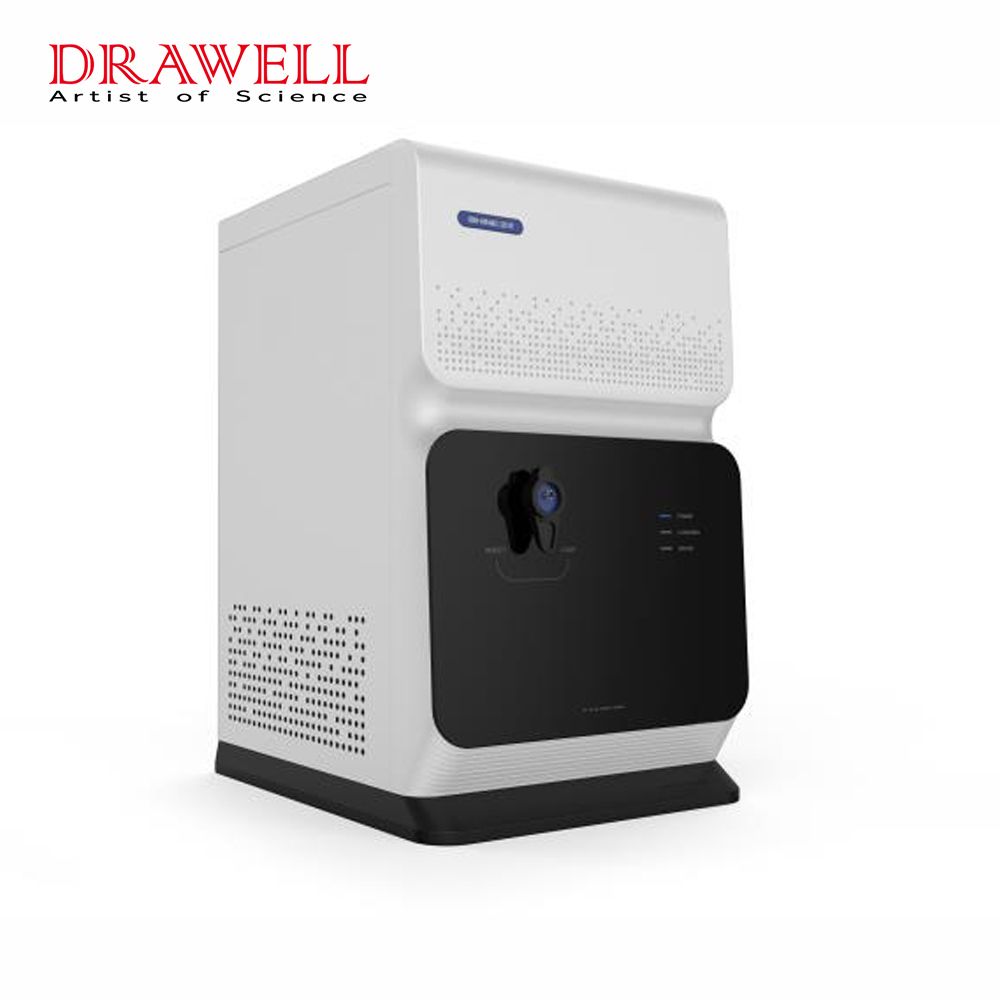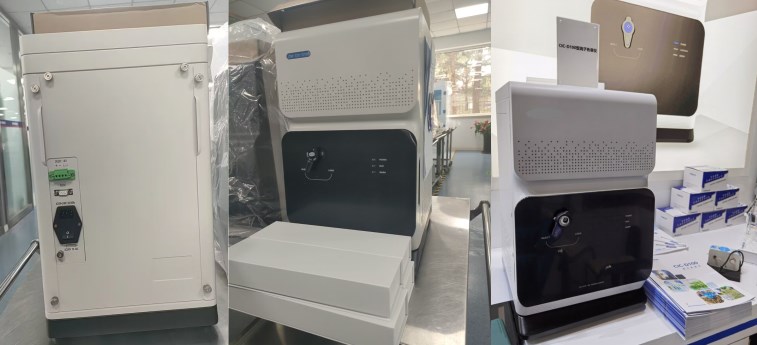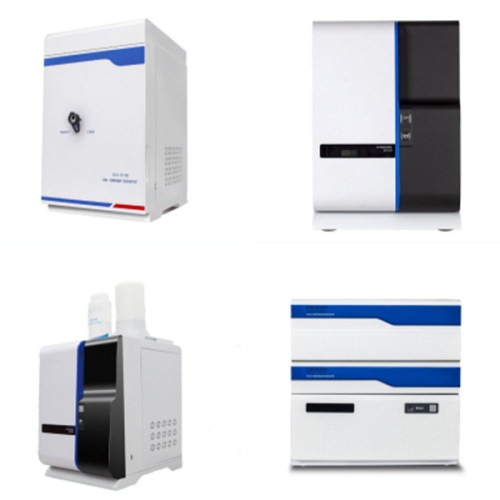It is critical to ensure that our water supply is free of dangerous contaminants and meets regulatory criteria. Ion chromatography (IC) is a potent analytical technology that has transformed water quality assessment. In this article, we dig into the world of ion chromatography in water analysis, learning about its principles, applications, and importance in protecting our most valuable resource.

Why Choose Ion Chromatography in Water Analysis?
Ion chromatography is a versatile and accurate analytical technique for separating and quantifying ions in a solution. It uses liquid chromatography principles but is specifically intended to separate and detect ions, making it a vital instrument for water analysis. An ion chromatograph’s main components are a sample injector, separation column, eluent (mobile phase), detector, and data analysis system.
What is the Working Process of Ion Chromatography in Water Analysis?
Sample Injection
A small amount of water sample is introduced into the chromatograph, often by an autosampler.
Separation Column
The sample is passed through a separation column containing a resin or stationary phase that is designed to selectively retain and release ions based on their chemical characteristics. The stationary phase reacts differently with different ions, causing them to separate.
Eluent Flow
A constant flow of eluent (a mobile phase containing an electrolyte solution) along the column transports the separated ions to the detector.
Detection
Ions elute from the column and pass through a detector, which measures their concentration. Depending on the ions being studied, common detectors include conductivity detectors, UV detectors, and amperometric detectors.
Data Analysis
The detector’s data is processed and examined to determine the concentration of ions in the sample.

What are the Key Applications of Ion Chromatography in Water Analysis?
Drinking Water Quality Monitoring
One of the primary applications of ion chromatography is in monitoring the quality of drinking water. It helps ensure that water sources meet the regulatory standards set by government agencies such as the Environmental Protection Agency (EPA) in the United States. IC is used to detect and quantify various ions and contaminants in drinking water, including:
Anions: Chloride, sulfate, nitrate, nitrite, bromide, fluoride, and phosphate.
Cations: Sodium, potassium, calcium, magnesium, and ammonium.
Trace Contaminants: Organic acids, heavy metals, and disinfection byproducts.
Wastewater Analysis
Ion chromatography (IC) is useful in determining the quality of wastewater released from industrial plants and municipal treatment plants. It aids with the identification and quantification of ions and pollutants in wastewater effluents, guaranteeing compliance with discharge laws. Sulfate, nitrate, phosphate, and organic acids are all common wastewater analytical factors.
Environmental Monitoring
In environmental studies, ion chromatography is used to assess water quality in natural bodies of water such as rivers, lakes, and seas. It is used to monitor ion and trace pollutant concentrations, providing information about the influence of industrial discharges, agricultural runoff, and other pollution sources on aquatic ecosystems.
Detection of Trace Contaminants
Ion chromatography excels at detecting trace contaminants in water samples. It is used to identify and quantify various harmful substances, including:
Heavy Metals: Lead, cadmium, arsenic, and mercury.
Toxic Anions: Perchlorate, bromate, and chromate.
Organic Acids: Acetic acid, formic acid, and oxalic acid.
The ability to detect these contaminants at low concentrations is crucial for environmental risk assessment and pollution control.
Pharmaceutical Water Testing
In the pharmaceutical industry, IC is critical in assessing water used in medication manufacturing operations. It ensures the quality and safety of pharmaceutical products by detecting and quantifying ions and impurities, including those arising from water purification processes.
Nutrient Analysis
Ion chromatography is used to analyze nutrients in water samples, particularly in studies related to nutrient cycling and eutrophication. It helps assess the levels of essential nutrients like nitrate, nitrite, phosphate, and ammonium in aquatic environments, shedding light on nutrient imbalances and their ecological consequences.
Monitoring of Acid Rain
Acid rain, which is caused by the deposition of acidic pollutants in the atmosphere, can have a negative impact on water bodies. Ion chromatography is used to evaluate the acidity (pH) and ion concentrations in raindrops, allowing researchers to estimate the environmental impact of acid rain.
Research and Development
Ion chromatography is also used in water research and development to examine water chemistry, ion exchange mechanisms, and the behavior of different ions in solution. This study helps to improve our understanding of water-related phenomena.

What are the Benefits of Ion Chromatography in Water Analysis?
High Sensitivity and Precision
Ion chromatography (IC) has the ability to detect ions at low concentrations, making it ideal for monitoring compliance with rigorous water quality regulations.
Wide Analyte Range
An ion chromatograph can evaluate a wide spectrum of ions at the same time, allowing for more complete water quality studies.
Selective Detection
Ion chromatograph’s ability to selectively detect specific ions ensures accurate quantification and minimizes interferences from other compounds.
Reliability
With well-established processes and quality control systems, the technique is extremely dependable.
Environmental Impact
Ion chromatography is environmentally friendly because it does not use toxic chemicals.
Conclusion
Ion chromatography has become an essential method in water analysis, allowing scientists and environmental experts to monitor and protect the quality of our water resources. Ion chromatography (IC) plays a critical role in guaranteeing access to clean and safe drinking water, protecting the environment, and supporting numerous industrial processes by offering precise, selective, and sensitive analysis of ions and pollutants.

